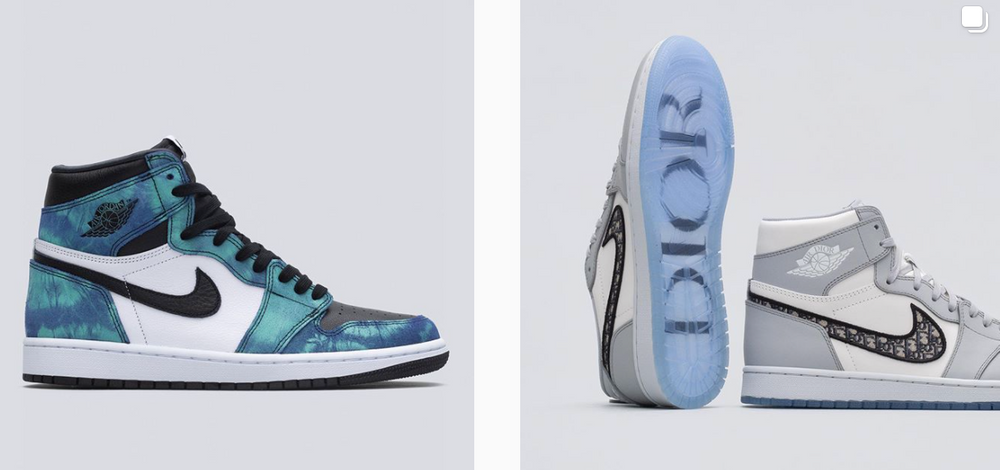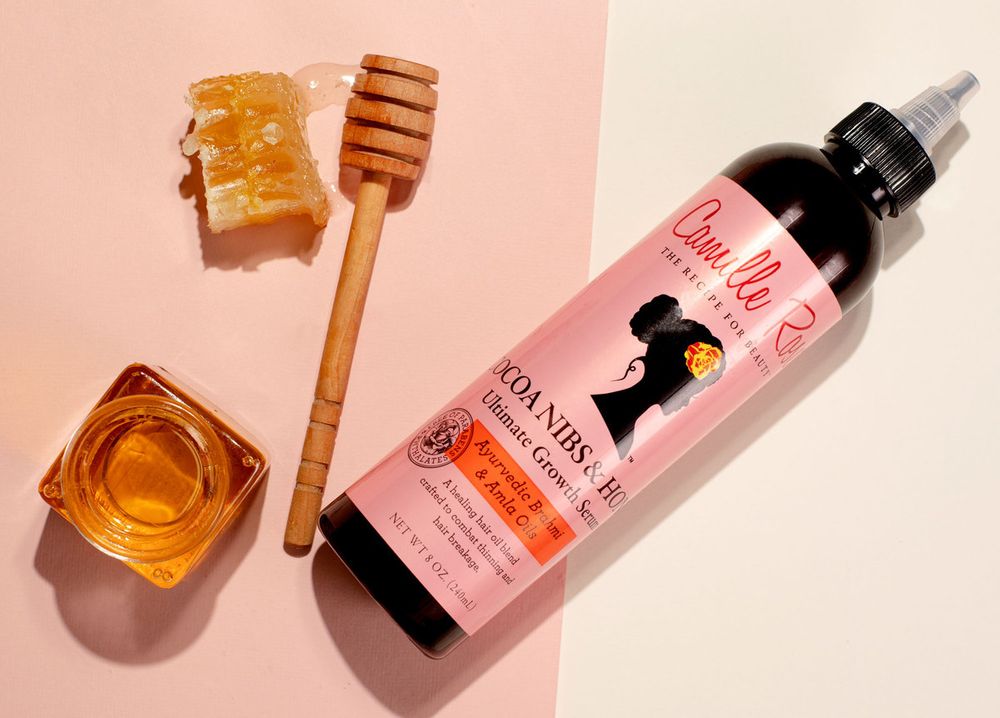|
Good afternoon. Every story you're about to read includes original reporting, and we’ve got a cameo from our incomparable editor, Dan McCarthy. Get used to it—there’s a lot more “told Retail Brew” where today’s newsletter came from.
In today’s edition:
- Social commerce redux
- Nike’s circularity commitment
- Camille Rose enters Ulta
— Dan McCarthy, Halie LeSavage, Katishi Maake
|
|

Francis Scialabba
|
Last Thursday we kicked off our virtual event series, The Checkout, with a conversation about social commerce’s evolution from product discovery → purchasing.
For the event, Halie spoke with Layla Amjadi, director of product management for Instagram Shopping, and Jason Wong, founder and CEO of Doe Beauty. Check out the full replay here, or keep scrolling for our biggest takeaways.
Frictionlessness
Wong said he’s generally noticed two buckets of Doe Beauty shoppers: people who take their time browsing, and people who “just want to see a product, add to cart, and check out in five seconds.”
Doe’s preferred platform: Instagram, which makes up about 38% of Doe’s overall revenue. There are fewer points of friction compared with competing platforms like TikTok, which don’t have an in-app checkout function.
Buying barriers
Despite the buzz and convenience, only 4.3% of US e-commerce sales will come from social commerce in 2021, per eMarketer.
Amjadi said one reason sales aren’t higher is that “we haven’t nailed, as an industry, proper attribution.” It’s hard to track how many purchases actually result from social discovery.
- Another issue is that brands haven’t been explicit enough about making the sale in their social posts.
- Amjadi said brands need to accept that “it’s okay to be a little bit clear about the sale—and that’s actually what people want.”
And social commerce has limitations for retailers with 50+ skus, Wong added, because tools like Instagram Shops don’t “give you the categorization and filter capabilities that larger storefronts do.”
Reality check: 4.3% of total e-commerce is actually a solid number, Wong said, because it takes time for people to build habits around new forms of shopping.
Brands most likely to succeed
Wong thinks small businesses have the advantage on social because they’re more nimble and typically have a more intimate relationship with followers. Amjadi agreed, saying that on Instagram, brands that engage their followers more also see higher conversion rates.
Looking ahead...Will social commerce ever become the predominant e-commerce channel?
- “I think social commerce, for specific categories, and specific segments of brands, will be the predominant source of sales,” Amjadi said.
- Wong said he thinks in the next ten years social commerce “will be just a quarter or a fraction of overall e-commerce sales, just because it’s so difficult to change consumer behavior in that short time window.”
Up next: The Checkout will return for episode two on May 6, when we'll define what 'sustainable retail' actually means with the help of leaders from Cuyana and Rothy's. RSVP here to tune in. — DM, HL
|
|

@stockx
|
If you miss out on a Nike shoe drop, you’ll now have a (slim) second chance at it...without having to take out a second mortgage.
Nike is introducing “Nike Refurbished,” a return offering that will be piloted at up to 15 US-based Nike stores starting this month.
How it works: A customer brings a pair of used shoes to the store for inspection. → If eligible, Nike then cleans and sanitizes the shoes. → The shoes are returned to shelves at a marked-down price.
Nike Refurbished is an investment in the company’s so-called “circular future,” in which product waste is minimized.
- Nike recently unveiled its 2025 sustainability targets, which includes a 10x increase in the product waste that’s refurbished or recycled.
Zoom out: Nike and some of its competitors are pulling back on wholesale in favor of DTC. Nike Refurbished supports that goal by providing more options to consumers, Nicole Otto, VP of Nike Direct North America, told Retail Brew.
“We continue to evolve the way we serve consumers more personally and at scale,” Otto said. “The urgency of climate change requires innovation…If there is no planet, there is no sport,” she concluded. — KM
|
|

|
Or study your palm. Or stare into your crystal ball. Whichever method you choose to peer into the future, they’re all bound to say the same thing: You need Listrak.
Fortune telling aside, the power of an integrated platform just makes sense for today’s marketing teams—and Listrak is the only integrated digital marketing platform trusted by 1,000+ leading retailers and brands like Paige, Academy Sports, and Vineyard Vines.
It provides best-in-class email, SMS, identity, triggers, personalization, and cross-channel orchestration—all things marketers need to engage customers and drive revenue.
Listrak also synchronizes interactions across channels, connecting customer data for closed feedback loops and driving better results with a lower TCO. This means you have fewer vendors to manage, less work, and higher profit margins.
The omniscient powers of marketing have spoken: Add Listrak to your team today.
|
|

Courtesy of Camille Rose
|
Camille Rose, one of the largest Black-owned haircare brands in the US, is no stranger to mass retail partnerships: Target, Sally Beauty, CVS. But to mark its tenth year in business, Camille Rose scored its most prestigious retailer yet—Ulta, in a deal spanning all US stores and online.
Worth the wait: “Ulta will heighten our awareness and provide a different consumer, one who may be more ingrained in the beauty experience,” Camille Rose founder Janell Stephens told Retail Brew.
The feeling was mutual. After Camille Rose became the most-requested new brand from Ulta shoppers, the retailer reached out to partner with Stephens last December.
New context: In February, Ulta said it would commit $25 million to diversity and inclusion at its stores, including doubling its number of Black-owned brands.
But scaling new brands doesn't stop at shelf space: Ulta is supplying Camille Rose with extra resources to alert shoppers of its latest launch.
- Camille Rose is receiving primary placement in stores (end caps and display tables) and a full-page ad in Ulta’s circular.
- “These types of perks for a brand my size are often unheard of,” Stephens told us.
The takeaway: Stephens said these educational efforts “set the tone” for other small, Black-owned businesses to receive extra support once a retail partnership is in place. — HL
|
|
-
Domino’s is testing robotic pizza deliveries in Houston this week.
-
The Honest Company filed for an IPO.
-
Tractor Supply enhanced its loyalty program perks.
-
218%: That’s how much shopping traffic surged in the UK after lockdown restrictions ended last week.
|
|

|
Each state is different—you don’t want Vermont barbecue or Texas maple syrup. TaxJar helps retailers navigate state differences in sales taxes; each of those 50 little mini-countries has its own rules about when retailers hit nexus, and you’ve gotta keep track of your sales in each one. It can be complicated, but TaxJar simplifies your sales, calculations, and filings for each state. Find out how here.
|
|
|
At the mall, it’s where band tees are the only tees. In Retail Brew, it’s where we invite readers to weigh in on a trending topic in retail.
In the middle of a store-in-storeaissance, one fast food chain is looking for more of its own space. Last week, the WSJ reported that McDonald’s will whittle down its restaurants within Walmarts to 150 locations.
- At the partnership's peak, McDonald’s operated around 1,000 restaurants in Walmart stores.
- Mini McDonald’s locations don’t come with drive-thrus, which make them less profitable.
Weigh in: A Walmart rep told CNBC new store-in-store developments could range from ghost kitchens to alternative quick service chains.
What should Walmart open to replace the Golden Arches? Cast your vote here.
Circling back: Last week, we asked whether H&M’s refusal to use Xinjiang cotton, and the ensuing boycott in China, would encourage retailers to rethink their international expansion plans. 65.8% of readers voted yes.
|
|
|
Finding success in the fashion industry means adapting to trends before consumers even recognize they’re trends—both in terms of styles and shopping preferences.
- The downfall of skinny jeans and the comeback of dresses are just a couple pandemic fashion trends brands are adapting to. (Modern Retail)
- Ganni did see a slowdown in 2020 revenue growth, but is now taking a data-driven approach to recapture its early success. (Business of Fashion)
|
|
|
Catch up on the Retail Brew stories you may have missed.
|
|
|
Written by
Dan McCarthy, Halie LeSavage, and Katishi Maake
Was this email forwarded to you? Sign up here.
|
ADVERTISE // CAREERS // SHOP
Update your email preferences or unsubscribe here.
View our privacy policy here.
Copyright © 2021 Morning Brew. All rights reserved.
22 W 19th St, 8th Floor, New York, NY 10011
|
|









